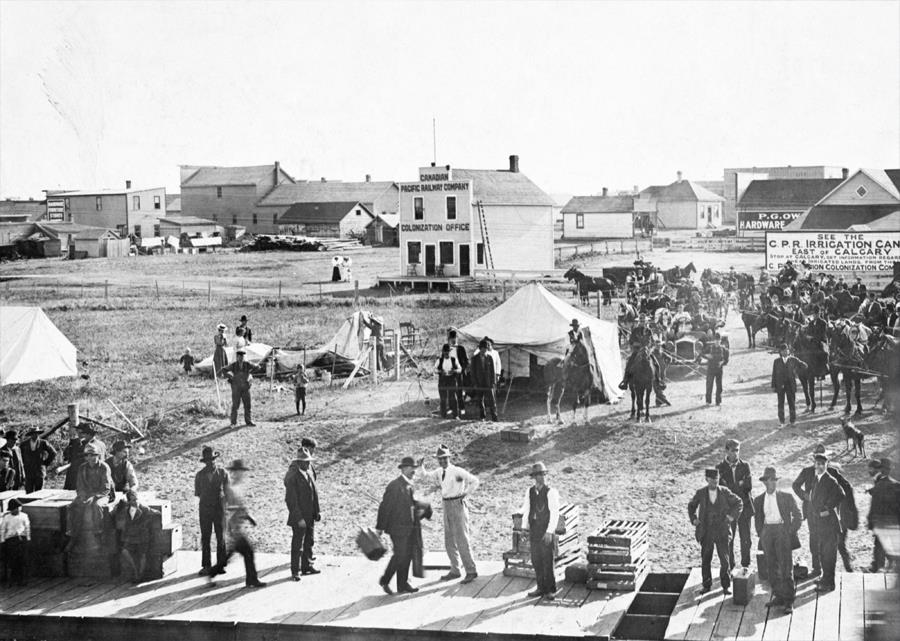Strathmore - CPR Heritage
Strathmore History & Heritage
Strathmore began as a community willing to give more when on July 28, 1883 Canadian Pacific forces manually laid 6.38 miles of track across the prairies to set a record.
This was a significant stretch of track because it ended that day on the south side of what was later to become the unloading point for thousands of settlers.
The CPR was empowered with naming the hamlets that sprang up at its sidings as the steel ribbons were laid across the country. Although it is not recorded who named the original site Strathmore, it is known that a Scot named James Ross was in charge of the project and he was inclined to giving Scottish names to the sidings.
 (Photo: Western District Historical Society)
(Photo: Western District Historical Society)By 1886 the intensive advertising campaign, launched by the Federal Government with the CPR to bring settlers west, was beginning to work. The Town was booming with lots being opened for sale in 1905 and by 1906 the CPR began selling land at $12 to $15 per acre, with irrigable land at $18 to $25 per acre.
In 1905, with the development of the irrigation system, the original hamlet of Strathmore was moved four miles north and centered around the 5,600 foot siding there.
This move to its present location is what gave the town its legacy "the town that moved".
By 1906 both irrigation water and settlers from the U.S. and the "old country" were pouring into Strathmore.
The CPR began planning for the development of what was to become a world famous demonstration farm. The farm was designed to act as both a model and an instruction tool for settlers, many of whom had never farmed before. The majority of the 2,000 acre demonstration farm was cultivated and almost 700 acres was irrigated. As time progressed, so did the farm's development.
In order to supply the tourist trains that were traveling to the Rockies, the CPR grew vegetables and flowers for the dining cars and CPR hotel facilities. In addition, "to make the area seem like a Shangri-La to the immigrants", there were experiments with exotic plants.
Although Strathmore and area was settled and developed by the CPR, by the middle 1950's it was obvious that highway competition was eliminating the railway's freight business. It was not until 1981 that the actual last rail was removed.
The CPR left Strathmore a living legacy - the irrigation system. Turned over to the users in 1944, the irrigation system continues to operate today under the management of the Western Irrigation District.
Learn about and download the “On This Spot” app to experience Strathmore’s history in an exciting new way (Download the app for FREE on the Play Store or App Store)
The “On This Spot” app takes you on guided walking tour throughout the historic landmarks in Strathmore and memories that surround them.
- At each stop on your journey, you'll find yourself standing on the very spot a historic photo was taken.
- You can view a then and now photo comparison, use the built in camera to create your own, and read about local history and how it ties into the broader human experience.
For those interested in learning more about the historical value of Strathmore, visit the Western District Historical Society.
Contact Us
Town of Strathmore
PO BOX 2280,
1 Parklane Drive, Strathmore, AB,
T1P 1K2,
Phone: (403) 934-3133
Fax: (403) 934-4713


